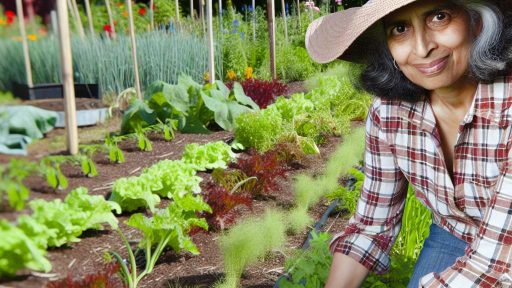Introduction to Organic Pest Control
Importance of Organic Pest Control
Organic pest control plays a vital role in sustainable farming.
This approach helps reduce chemical reliance in agriculture.
Farmers can maintain healthier ecosystems using organic methods.
Moreover, it encourages biodiversity by protecting beneficial insects.
Benefits of Organic Pest Control
One significant benefit is the promotion of soil health.
Organic methods prevent harm to soil organisms vital for growth.
In addition, these practices lead to safer food production.
Consumers appreciate food free from harmful pesticides.
Furthermore, organic pest control can reduce costs over time.
By utilizing natural solutions, farmers can lower chemical expenses.
Lastly, organic pest control enhances crop resilience against pests.
This resilience can yield higher quality and quantity of produce.
Common Pests in Sustainable Farming
Identifying Common Pests
Sustainable farming often encounters various pests.
These pests include aphids, caterpillars, and beetles.
Identifying them early is crucial for effective management.
Transform Your Agribusiness
Unlock your farm's potential with expert advice tailored to your needs. Get actionable steps that drive real results.
Get StartedMoreover, recognizing pest patterns helps farmers respond appropriately.
Impact of Pests on Farm Health
Pests can significantly affect crop yields.
They cause damage through feeding and disease transmission.
Additionally, they can lead to reduced quality of produce.
Consequently, farmers may experience economic losses.
Reducing pest populations is essential for sustainability.
Specific Pests to Watch
Aphids are small, soft-bodied insects.
They suck sap from plants, weakening them.
Furthermore, they can spread viruses among crops.
Caterpillars, especially those from moths and butterflies, also pose a threat.
They feed on leaves, stems, and fruits of plants.
This feeding can lead to defoliation and reduced harvests.
Finally, beetles, such as the cucumber beetle, damage various crops.
They can both feed on plants and transmit diseases.
Integrated pest management helps control these pests effectively.
Cultural Control Methods
Crop Rotation
Crop rotation is a vital practice in sustainable farming.
This method involves changing the type of crops grown in a specific area over time.
By rotating crops, farmers disrupt pest lifecycles and reduce infestations.
Additionally, rotating crops helps to maintain soil fertility and health.
Different crops require various nutrients, thus preventing soil depletion.
Farmers can also manage weeds effectively through this approach.
Furthermore, this practice can enhance biodiversity in the farming ecosystem.
Benefits of Crop Rotation
Implementing crop rotation offers numerous advantages.
- It reduces soil erosion.
- It enhances nutrient availability.
- It improves pest and disease control.
- It supports soil microbial diversity.
Companion Planting
Companion planting is another effective cultural control method.
Showcase Your Farming Business
Publish your professional farming services profile on our blog for a one-time fee of $200 and reach a dedicated audience of farmers and agribusiness owners.
Publish Your ProfileThis technique involves planting two or more crops together for mutual benefit.
Specific plants can repel pests or attract beneficial insects.
For example, marigolds deter nematodes and other pests.
Additionally, legumes enhance soil nitrogen levels for neighboring plants.
By cultivating compatible crops together, farmers boost productivity sustainably.
Benefits of Companion Planting
Utilizing companion planting yields several key benefits.
- It increases crop yields.
- It reduces the need for chemical pesticides.
- It promotes ecological balance in the garden.
Learn More: Understanding Traditional Cheese Making Techniques For Local Markets In The USA
Biological Control: Utilizing Natural Predators and Parasites
Introduction to Biological Control
Biological control relies on natural predators to manage pest populations.
This method reduces the need for synthetic pesticides.
Additionally, it promotes a healthier ecosystem.
Types of Natural Predators
Beneficial insects effectively control pest populations.
Examples include ladybugs and lacewings.
Birds also play a significant role in pest management.
Furthermore, certain mammals can help by eating pests.
Using Parasites for Pest Control
Parasites can target specific pests without harming crops.
For instance, parasitoid wasps lay eggs in pest larvae.
This method significantly reduces pest numbers.
Moreover, it minimizes the disruption of beneficial insects.
Creating a Supportive Environment
Farmers can enhance biological control by providing habitats.
Planting diverse crops attracts beneficial organisms.
Additionally, maintaining water sources supports natural predators.
All these strategies promote a balanced ecosystem.
Challenges in Biological Control
Implementing biological control requires careful planning.
Some predators may not adapt well to new environments.
Furthermore, pest populations can rapidly rebound.
Farmers must monitor their strategies regularly.
Success Stories in Biological Control
Many farmers have successfully utilized biological control.
For example, the introduction of ladybugs has saved crops.
Agriculture companies often collaborate with ecologists.
Such partnerships enhance pest management strategies.
Gain More Insights: Artisanal Food Production for Dairy and Cheese Makers
Mechanical Control Techniques
Hand-Picking
Hand-picking is a straightforward and effective method for pest control.
This technique involves physically removing pests by hand.
Farmers often use it for larger pests like caterpillars and beetles.
It works well in small garden settings or organic farms.
Additionally, hand-picking allows for monitoring of pest populations.
Farmers can identify other plant health issues while doing this task.
Traps
Traps provide another effective mechanical control method.
Options for traps include sticky traps and baited traps.
Sticky traps capture flying insects like aphids and whiteflies.
Showcase Your Farming Business
Publish your professional farming services profile on our blog for a one-time fee of $200 and reach a dedicated audience of farmers and agribusiness owners.
Publish Your ProfileMeanwhile, baited traps attract specific pests using food lures.
It’s essential to place traps strategically around crops.
This placement increases their effectiveness and reduces pest numbers.
Barriers
Installing barriers can prevent pests from reaching crops.
Common barriers include row covers and nets.
Row covers protect plants from insects and harsh weather.
Nets can block birds and larger animals from accessing crops.
Farmers must ensure barriers are properly secured.
This guarantees they withstand wind and do not harm beneficial insects.
See Related Content: Improving Traceability And Transparency Through Direct Farm Deliveries
Botanical Insecticides: Overview of Natural Pesticides and Their Uses
Introduction to Botanical Insecticides
Botanical insecticides come from plants and are used in pest control.
These natural pesticides offer eco-friendly alternatives to synthetic chemicals.
Farmers often choose them for their effectiveness and lower environmental impact.
Common Types of Botanical Insecticides
- Neem oil is derived from the seeds of the neem tree.
- Pyrethrin comes from chrysanthemum flowers.
- Insecticidal soaps trap and suffocate pests upon contact.
- Diatomaceous earth is a natural powder that disrupts insect exoskeletons.
Benefits of Using Botanical Insecticides
They often show lower toxicity to beneficial insects like bees.
Additionally, they break down more quickly in the environment.
This leads to a reduced risk of groundwater contamination.
Moreover, many plants repel specific pests naturally.
Application Methods
Farmers should apply botanical insecticides during early mornings or late evenings.
These times reduce the risk of harming beneficial insects.
Using a sprayer can help with even distribution over crops.
Always follow product instructions for the best results.
Challenges and Considerations
Botanical insecticides may require more frequent applications.
This is due to their shorter residual activity compared to synthetic options.
Furthermore, they might not be effective against all pest types.
Consequently, integrated pest management is often recommended.
Successful Case Studies
Farmers worldwide have utilized botanical insecticides with great success.
For example, Maria’s organic farm reduced aphid populations using neem oil.
Additionally, Tom’s vegetable garden thrived with insecticidal soap applications.
These methods demonstrate their potential in sustainable agriculture.
Uncover the Details: Cultivating Community Engagement With Permaculture Education On Local Farms

Integrated Pest Management (IPM): Combining Strategies for Effective Control
Overview of IPM
Integrated Pest Management (IPM) recognizes the need for comprehensive pest control.
It integrates multiple strategies to minimize pest populations sustainably.
IPM promotes the use of natural pest control methods whenever possible.
This approach helps reduce dependency on chemical pesticides.
Components of IPM
- Monitoring and identification of pests.
- Setting action thresholds for interventions.
- Utilizing biological control methods.
- Incorporating cultural practices to deter pests.
- Implementing mechanical control measures.
- Applying chemical treatments only when necessary.
Monitoring and Identification
Regular monitoring is crucial in IPM programs.
Farmers must identify pest species accurately.
This helps determine the level of intervention needed.
Monitoring includes observing crop health and pest populations.
Setting Action Thresholds
Establishing action thresholds guides pest management decisions.
These thresholds indicate when control measures should be implemented.
Showcase Your Farming Business
Publish your professional farming services profile on our blog for a one-time fee of $200 and reach a dedicated audience of farmers and agribusiness owners.
Publish Your ProfileFarmers should consider economic and ecological impacts.
This prevents unnecessary treatments, saving resources.
Biological Control Methods
Biological control leverages natural predators of pests.
For example, ladybugs can manage aphid populations effectively.
Introducing beneficial insects promotes ecological balance on farms.
Additionally, microbial pesticides target specific pests without harm to others.
Cultural Practices
Cultural practices enhance crop resilience against pests.
Diverse crop rotations can disrupt pest life cycles.
Healthy soil supports plant vigor, reducing susceptibility to pests.
Proper irrigation and fertilization practices also contribute significantly.
Mechanical Control Measures
Mechanical controls use physical methods to deter pests.
For instance, row covers protect young plants from insects.
Hand-picking pests remains effective for small-scale farms.
Traps can monitor and reduce pest populations as well.
Chemical Treatments
Chemical treatments should be a last resort in IPM.
When necessary, select targeted pesticides with minimal environmental impact.
Timing applications to coincide with pest life cycles enhances effectiveness.
Proper application techniques further ensure safety for beneficial organisms.
Challenges and Limitations of Organic Pest Control Methods
Effectiveness Compared to Conventional Methods
Organic pest control methods often require more effort and knowledge.
They may not always be as effective as synthetic pesticides.
This can lead to higher pest populations in some cases.
Farmers must carefully monitor pest levels and crop health.
Sometimes, organic solutions may not provide immediate results.
Limited Availability of Resources
Organic methods can depend heavily on specific resources.
These resources may not always be readily available.
For example, natural predators require a suitable environment.
Access to organic pesticides can also be restricted.
Farmers may struggle to find the right products for their needs.
Economic Considerations
Implementing organic pest control can incur higher initial costs.
Organic methods often require more labor and time investment.
This can strain the budgets of smaller farms more than larger ones.
Additionally, returns can vary depending on the pest situation.
Success in organic farming may not guarantee market viability.
Knowledge and Training Requirements
Farmers need extensive knowledge about pest life cycles.
Understanding how to implement organic solutions is essential.
Training may be necessary for effective pest management.
Without proper education, farmers may struggle to succeed.
This can lead to reliance on less sustainable practices.
Environmental Factors
Environmental conditions can significantly impact organic pest control.
Weather changes may affect the effectiveness of natural methods.
Showcase Your Farming Business
Publish your professional farming services profile on our blog for a one-time fee of $200 and reach a dedicated audience of farmers and agribusiness owners.
Publish Your ProfileFor instance, heavy rain can wash away organic treatments.
Moreover, unexpected pest outbreaks can challenge strategies.
Such factors can make organic farming more unpredictable.
Future Trends in Organic Pest Control
Advancements in Technology
Technology is shaping the future of organic pest control methods.
Innovations like drones and robotics are becoming commonplace on farms.
These technologies help monitor pest populations quickly and efficiently.
Furthermore, artificial intelligence is assisting in data analysis for pest management.
Biopesticides and Natural Predators
Research continues to focus on biopesticides derived from natural resources.
These products often pose fewer risks to non-target organisms and humans.
Additionally, integrating natural predators is gaining traction among sustainable farmers.
Farmers are increasingly releasing beneficial insects to combat pests organically.
Agroecological Practices
Agroecology emphasizes blending traditional knowledge with modern techniques.
This approach not only reduces pests but also enhances soil fertility.
Crop rotation and companion planting are critical components of agroecological practices.
Moreover, these practices foster biodiversity on the farm, further supporting ecosystem health.
Consumer Awareness and Demand
Consumer interest in organic farming is on the rise.
This growth drives farmers to adopt more sustainable pest control methods.
Transparency in food production enhances consumer trust and loyalty.
Consequently, businesses are motivated to explore safer pest control options.
Research and Development Collaborations
Collaborations between universities, researchers, and farmers are essential.
These partnerships boost innovation in organic pest control techniques.
Moreover, collaboration facilitates knowledge sharing about best practices.
As a result, farmers can apply new findings directly to their operations.
Additional Resources
Farm-to-Table Movement | American Fruit and Vegetable
Crop Rotation Strategies That Foster Biodiversity In American …




